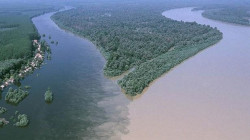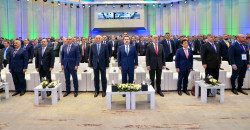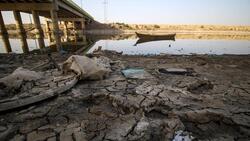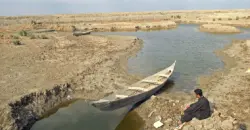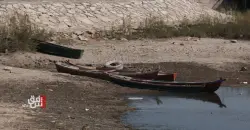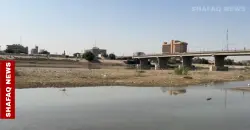Water Politics in the Tigris-Euphrates Basin-report
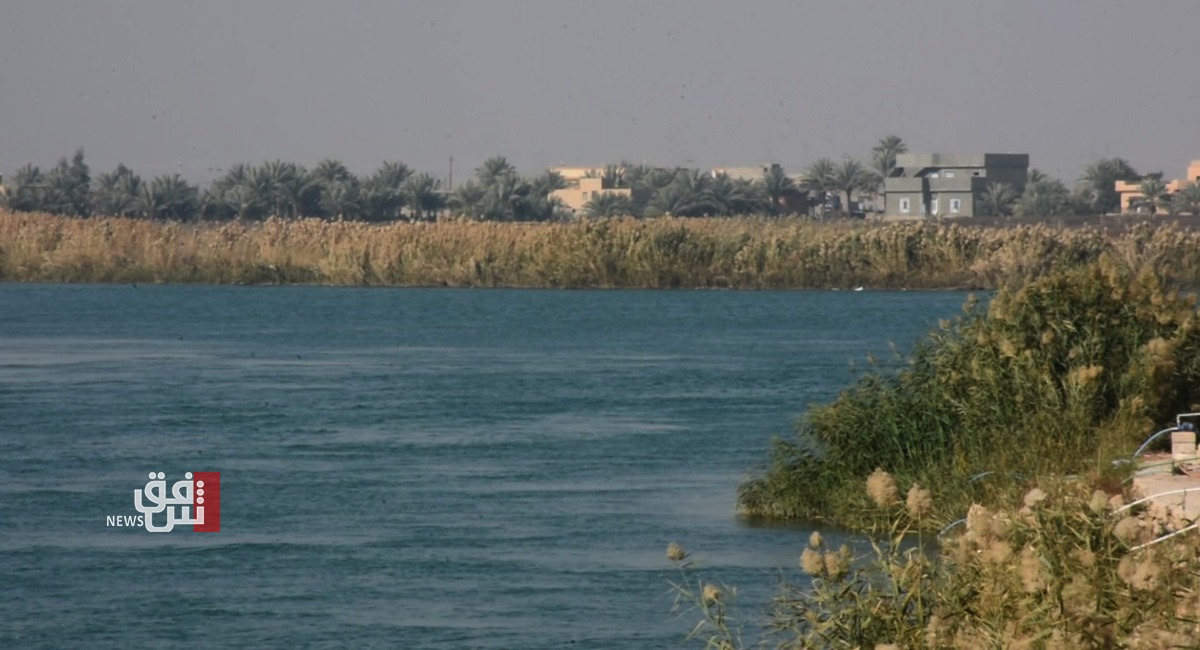
Shafaq News / While energy security and the control of oil have long been determining factors for geopolitical conflict in the Middle East, the region’s geopolitics have also, in important ways, been shaped by issues around access to water. Whether along the region’s transnational rivers, such as the Nile, Tigris, and Euphrates, or in key coastal zones—especially the Arabian Gulf and the Strait of Hormuz—the control, use, distribution, and transportation of water have been key areas of strategic concern for Middle Eastern states. Water politics, however, has tended to be separated from wider geopolitical dynamics and abstracted from other security concerns. In important ways, water security both combines with and informs regional conflicts, and is also closely linked to energy and food security. Moreover, the effects of climate change are making such entanglements ever more involved, leading to fierce feedback loops that connect water, food, and energy in detrimental ways.
The riparian system of the Tigris and Euphrates dominates the water politics of the Mashreq (the eastern part of the Arab world). With a combined area of a little under 880,000 square kilometers spanning across six countries, they are the two largest rivers in Western Asia. Originating in Turkey, they chart a course across eastern Anatolia, Syria, and Iraq, before finally emptying into the Arabian Gulf in southeastern Iraq. Their combined river basins are home to unique ecosystems, most notably the Iraqi Marshes, a complex patchwork of waterways, rivers, marshes, reedbeds, and islands that forms the largest wetland ecosystem in the Middle East. The rivers are central to the region’s economies and the livelihoods of its inhabitants. It is estimated that some 60 million people rely on the Euphrates alone, making the river central to regional stability.
However, the Tigris and Euphrates have been subject to the negative effects of a lack of transnational water cooperation and management. Dams, irrigation systems, and water management plans have largely been conducted unilaterally, resulting in a zero-sum game that makes the rivers’ resources the object of rivalries and competition. For example, for decades Turkey, which imports some three-quarters of its energy, has looked to hydropower on the Tigris and Euphrates as a domestic solution to its energy needs. Most recently, the country’s hydroelectric Ilisu Dam on the Tigris has sparked geopolitical tensions with Iraq and Syria, with the latter two countries currently exploring international legal mechanisms and diplomatic channels to block the construction of the dam.
With its construction having begun in 2007, the Ilisu Dam is part of Turkey’s Southeastern Anatolia Project (GAP), which includes 22 dams and 19 hydroelectric power plants along the Tigris and Euphrates near Turkey’s borders with Syria and Iraq. The project has long been criticized by Middle Eastern countries due to the impact it will have on the water supply to Turkey’s southern neighbors, and has been postponed several times. It is estimated that Turkey’s various dam and hydropower construction projects have reduced Iraq’s water supply along the two rivers by 80 percent since 1975 and that the Ilisu Dam will reduce the waters of the Tigris in Iraq by an additional 56 percent. For Iraq, the dam is likely to put ever greater pressure on its agriculture and natural habitats, increasing desertification and salination in regions as far away as Iraq’s southern marshes.
Opposition has also come from Kurdish groups that argue that the dam, which flooded lands that are historically and culturally important to Kurds and destroyed the ancient Kurdish city of Hasankeyf—represents a human rights violation. For Turkey, water management allows for the further securitization and pacification of Kurdish areas, quashing questions of Kurdish land rights, ownership, and national identity under the weight of the professed necessity of dam construction and water and energy security.
Since the Ilisu Dam came online in May 2020, Iraq has had to request a month-to-month minimum flow from Ankara. While Turkey argues that the dam benefits Iraq by allowing for a more regulated and predictable flow on the Tigris, Iraqi officials complain that the dam has increased uncertainty for Iraqi farmers, who are now subject to Ankara’s whims. A 2021 memorandum of understanding that requested that Turkey provide Iraq with a fair share of water from the Tigris and Euphrates was a step in the right direction, but has not been followed up by more binding and lasting agreements. In the future, a multilateral water agreement between Iraq, Iran, Turkey, and Syria (as well as Saudi Arabia and Jordan, which each receive a small proportion of water from the Euphrates) would be a significant step toward viewing water rights as an area of cooperation in the region, rather than one of competition.
It is also worth noting that the dam has been far from successful in terms of safeguarding Turkey’s domestic energy and water security. In January 2022, the effects of climate change and reduced precipitation in the Tigris watershed caused the reservoir level to drop below the 500-meter mark. And the hydroelectric dam produces on average less than half its potential energy output. Even if the Ilisu Dam has not ensured Turkey’s energy or water security, it has nevertheless been an effective geopolitical tool for the country vis-à-vis Iraq and Syria. It appears that Turkey may be using the dam as leverage to extract economic and political concessions from Iraq. That being said, it seems that the potential for water politics to produce bilateral conflict may be overstated. Turkey has long been Iraq’s chief regional trading partner, with bilateral trade reportedly exceeding $24 billion in 2022, and there are signs of growing economic cooperation and linkages. This has included both Baghdad’s favoring of Turkish companies for key infrastructure projects and plans for a road and rail link stretching from the Grand Faw Port in southern Iraq to Istanbul. Meanwhile, water rights have also been used to justify military operations. In Syria, for example, Turkey and Turkey-backed groups have been accused of weaponizing water, using dams to limit water supply to the Kurdish-controlled Autonomous Administration of North and East Syria (AANES).
The Kurds of the AANES, who are caught between the water policies of their four neighboring states (Iran, Iraq, Syria, and Turkey), are often viewed as the weaker partner in any regional water conflicts and denied any agency in the face of these larger powers. Nevertheless, the Kurds have themselves utilized water as a strategic asset and sought to capture key water infrastructure in northern Syria. This has included seizing control of some of Syria’s largest dams from the so-called Islamic State, such as the Tabqa Dam and Tishrin Dam.
The Kurdish region of Iraq, meanwhile, benefits from relative water abundance when compared to the rest of the country and to Syria, with large groundwater reserves and the potential to be self-sufficient in water and to use its water to engage in diplomacy with its larger neighbors. The Kurdistan Regional Government (KRG) has already stated its desire to use its large gas reserves to become an energy hub in the region, and it also should look to leverage its water resources and its strategic location between Turkey, Iraq, and Iran to help bolster its sovereignty claims and its legitimacy in the eyes of the international community. But despite the region’s relative abundance in water, the KRG has sometimes been responsible for the mismanagement of water resources, failing to put in place the kind of institutions and legal frameworks that might mitigate the dual pressures of growing water demand and water scarcity. This has been compounded by pressures caused by both internally displaced people and Syrian refugees seeking refuge in the Kurdistan region of Iraq, increasing the population by 28 percent. And a move toward increasingly water-intensive agricultural methods has placed further strain on the region’s water resources and management.
The effects of climate change appear likely to further deepen tensions along the Tigris and Euphrates. The river basin is viewed as one of the world’s most vulnerable watersheds, and with temperatures increasing in the region twice as fast as the global average, increased surface evaporation is likely to place further pressure on the river and those who rely on it for survival. Between 2020 and 2021 the region witnessed its second lowest rainfall season in four decades with a 29 percent reduction in the flow of the Tigris and a 73 percent reduction in the Euphrates. By the end of the century, the flows of the Euphrates and Tigris are forecast to decrease by 30 and 60 percent, respectively. As water flows, and in turn, Iraqi grain production continue to dwindle (wheat production decreased by 40 percent in 2022), the country will become ever more reliant on international grain markets which, as the war in Ukraine has demonstrated, are vulnerable to price shocks induced by war or drought. Aware of these vulnerabilities, the Iraqi government has announced a redoubling of water diplomacy with upstream states, as well as its own dam building strategy.
Anthropogenically induced changes have already led to examples of local conflict, and there indeed are large-scale climate change migration and social instability in the region. For instance, some analysts have connected the Syrian revolution and its ensuing civil war to water scarcity in the region. In the years prior to the civil war, severe droughts led to agricultural failures and significant migration out of the Syrian countryside and toward major cities like Aleppo and Damascus. More recently, historically low water levels in the Euphrates in 2021, combined with low rainfall and high temperatures, led to a 95 percent drop in crop production in one Syrian governorate. Failed harvests, combined with ten years of war and unstable global grain markets, have triggered a hunger crisis in Syria that has received little international attention. War and water insecurity are thus mutually constitutive; drought was one of the factors that triggered the civil war, and the civil war has deepened Syria’s water crisis.
Successive years of below average precipitation have placed severe pressures on Syria’s northeast region, in a country where nearly half the population relies on agriculture for its livelihood. Syria’s wheat harvest in 2022 was around one million tons, down from 2.8 million in 2020 prior to its water crisis. Most recently, the General Administration of Dams in North and East Syria announced that for the 2023 agricultural season the Tishrin Dam will be used solely for drinking water and not for irrigation due to Turkey’s withholding of water flows on the Euphrates. One effect of such water stresses will be increased energy use as states employ energy-intensive technologies such as pumping groundwater for irrigation and deploying desalination plants for potable water.
Further downstream, former Iraqi President Barham Salih has warned that Iraq may face a water deficit of 10.8 billion cubic meters per year by 2035. And the Iraqi Ministry of Water Resources has said that the Euphrates could run dry in Iraq by 2040. Iraq is already beginning to witness the social and economic effects of water scarcity. In the Iraqi Marshes, there have been increasing tensions between buffalo herders and local farmers, as well as fears of tribal violence. As in Syria, water stresses in the countryside are causing rural to urban migration, with rural migrants gravitating toward the poorest neighborhoods of cities such as Basra. This places ever greater stresses on the water infrastructure of cities that have suffered from years of neglect and mismanagement. Also worrying are recent cases of targeted violence against Iraqi environmental activists. In the coming years, such intercommunal tensions may very well spread and, as climate change-induced migration increases, take on a regional character.
(Arab Center Washington DC)
